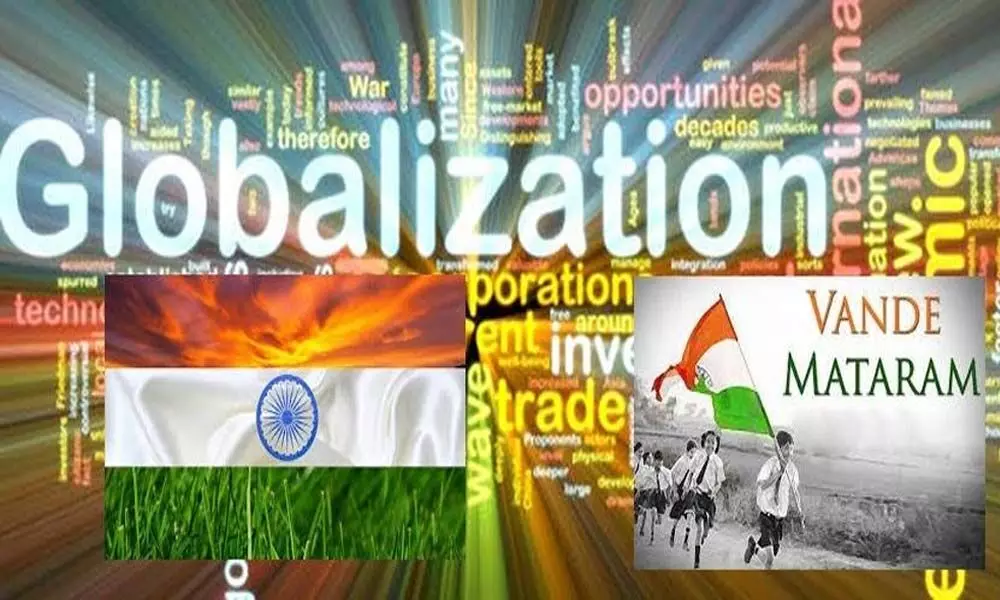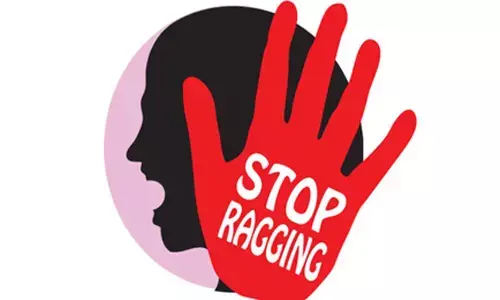Needed: A new avatar of protectionism

Needed: A new avatar of protectionism
Prime Minister Narendra Modi has enumerated a number of positive signs in the economy seen in September 2020 and expressed hope that the GDP growth rate will pick up in the next fiscal 2021-22
Prime Minister Narendra Modi has enumerated a number of positive signs in the economy seen in September 2020 and expressed hope that the GDP growth rate will pick up in the next fiscal 2021-22. He has pointed out that agricultural production is at record levels; a 15 percent increase in freight hauled by the railways is seen; India has emerged as a global supplier of Personal Protective Equipment, pharmaceuticals and ventilators; India has seen a 13 percent increase in inward Foreign Direct Investment in April-August which is highest ever.
However, other disturbing indicators are emerging at the same time. Only three months ago a number of global agencies had forecast a 5 percent decline in India's GDP in the current year. Today they have forecast a 10 percent contraction. GDP per capita or income per person is a better indicator of the state of a country's economy because while GDP is a measure of the total income of a country, GDP per capita is a measure of the income of a citizen of the country. The International Monetary Fund has assessed that India's GDP is likely to be US Dollars 1877 per capita against Bangladesh at US dollars 1888 per capita. We have slipped behind Bangladesh.
Global rating agency Moody's has downgraded India's sovereign rating to Baa3 which is the lowest investment grade rating. A further downgrade would make it difficult for the Government of India as well as Indian companies to access foreign funds. Our manufactured exports are slipping. Our exports of iron ore increase by 63 percent and of rice increased by 33 percent between June 2019 and June 2020. However, our key manufactured exports of Jewelry declined by 50 percent, leather products by 40 percent and textiles 35 percent.
India stands at the 94th rank in the World Hunger Index which is lower than Bangladesh at 75th, Myanmar at 78th, Pakistan at 88th rank. Our performance in containing Covid is also dismal. As of 29.10.2020, we have had 87 deaths per million population against 1 for Sri Lanka, 22 for Myanmar, 26 for Bangladesh, 30 for Pakistan and 31 for Nepal. These negative indicators give us a reason to reexamine the way forward.
We have before us two paths here onwards. Former Governor of Reserve Bank of India Raghuram Rajan has warned that India should not adopt the path of protecting domestic industries by raising import duties as has been done recently for some products. Protectionism means that we increase the import duties collected on foreign goods entering India so that the price of imported goods increases; and the price of domestic production becomes less in comparison; leading to sale of the latter. He has warned that we had followed the same protectionist policy before the economic reforms of 1991 with disastrous results.
A license permit raj was prevalent that enabled selected big domestic companies to extract monopolistic profits and the politician-bureaucratic alliance to extract huge corruption money. At that time the Government not only had prohibitive import taxes of up to 150 percent but also quantitative restrictions. One was not allowed, for example, to import cars even by paying the 150 percent import duty. The domestic businesses could sell their goods at high prices and they shared the bounty with the politician-bureaucratic alliance. Say, the cost of production of a tube light in India as well as China was Rs 500.
Now, the Government at that time imposed an import duty of Rs 200. This led to increase in the cost of imported tube light to Rs 700. The domestic manufacturers increased the sale price to Rs 700 because they were "protected" both from foreign competition due to high import taxes and from domestic competition because license permit raj. They made a windfall of Rs 200 per tube light that they shared with the politician-bureaucratic alliance. Rajan has done well to draw attention to this peril in increasing import duties. However, Governments have utterly failed to put an end to the extortion by the politician-bureaucratic alliance. Thus, we need a Plan B. Here, protectionism comes back.
However, the present situation is different than the pre-reform period on three counts. The first difference is that we had quantitative restrictions or prohibitive duties on imports previously. One could, for example, could not import a car even by paying a 150 percent import duty. Presently we can increase import duties by a relatively small amount. For example, if the Government imposes an import duty of Rs 200 on tube light. Then the politician-bureaucratic alliance will be able to extort only Rs 200. Imports will come in if they extort Rs 300. The first difference is that there is presently an upper limit to the extortion. Second difference is that domestic monopolies held sway in the eighties.
For example, the Tatas reportedly wanted to manufacture cars but the Government did not give license to them in order to protect the monopoly of the Birlas. This monopoly was broken only when Politician Sanjay Gandhi jumped into the fray. At present we have dismantled the license permit raj and competition prevails among the big businesses—both domestic and foreign. Therefore, the chances of extortion of monopolistic profits are much less today. Third difference is that the exposure of our businesspersons to global manufacturing and marketing practices was very limited.
Today a number of Indian businesspersons have set up manufacturing facilities in China and they are importing into India the goods made by them in China. Thus, our businesspersons have acquired frontline technologies. An increase in import duties today will not lead to the situation of the eighties because competition among big businesses will reduce the extraction of monopolist profits; and imports will set an upper limit to the extortion by the politician-bureaucratic alliance.
The result of increasing import duties will that the price of the goods will increase in the domestic market. The price of tube light will increase from Rs 500 to Rs 700. The extortion by the politician-bureaucratic alliance will increase behind the protectionist barriers, say, by Rs 100. Yet, the competition between big business will prevent the extraction of monopolist profits. I estimate that the price of a domestically produced tube light will be Rs 600 while that of the imported tube light will be Rs 700.
As a result, the Indian businessperson who is presently manufacturing tube lights in China and importing them into India will shift his manufacturing facility to India and "Make in India" will succeed. Therefore, we should not be bound by our past experiences and increase import duties as a second-best path within the present dismal political situation.
(The writer is formerly Professor of Economics at IIM, Bengaluru)










